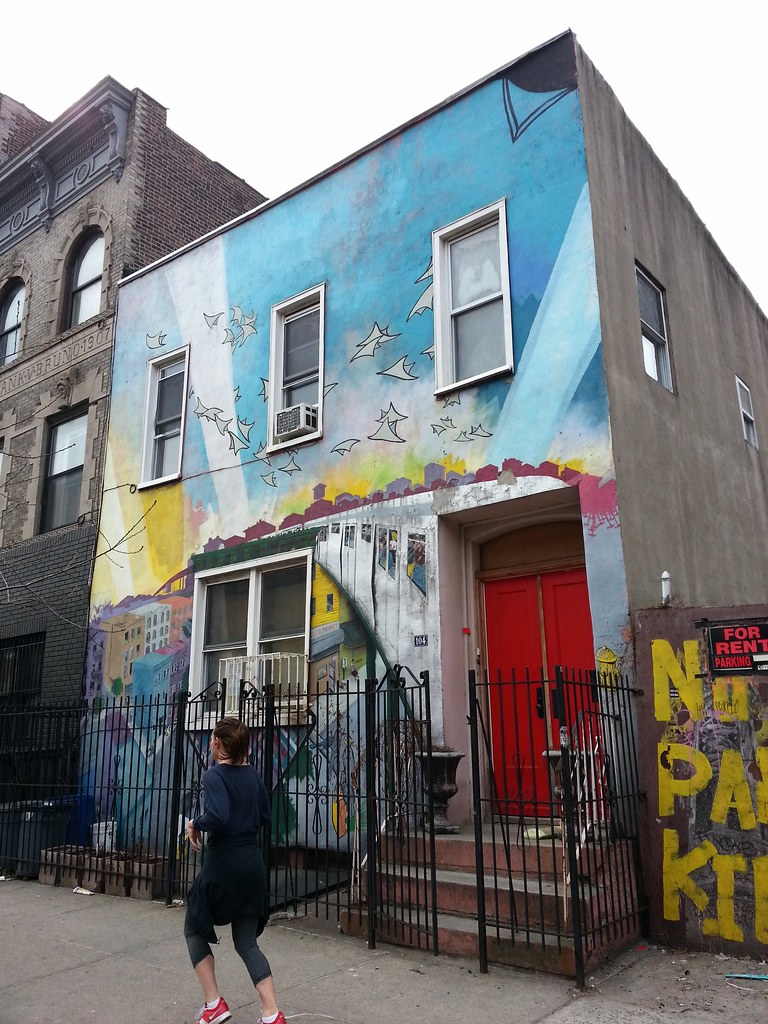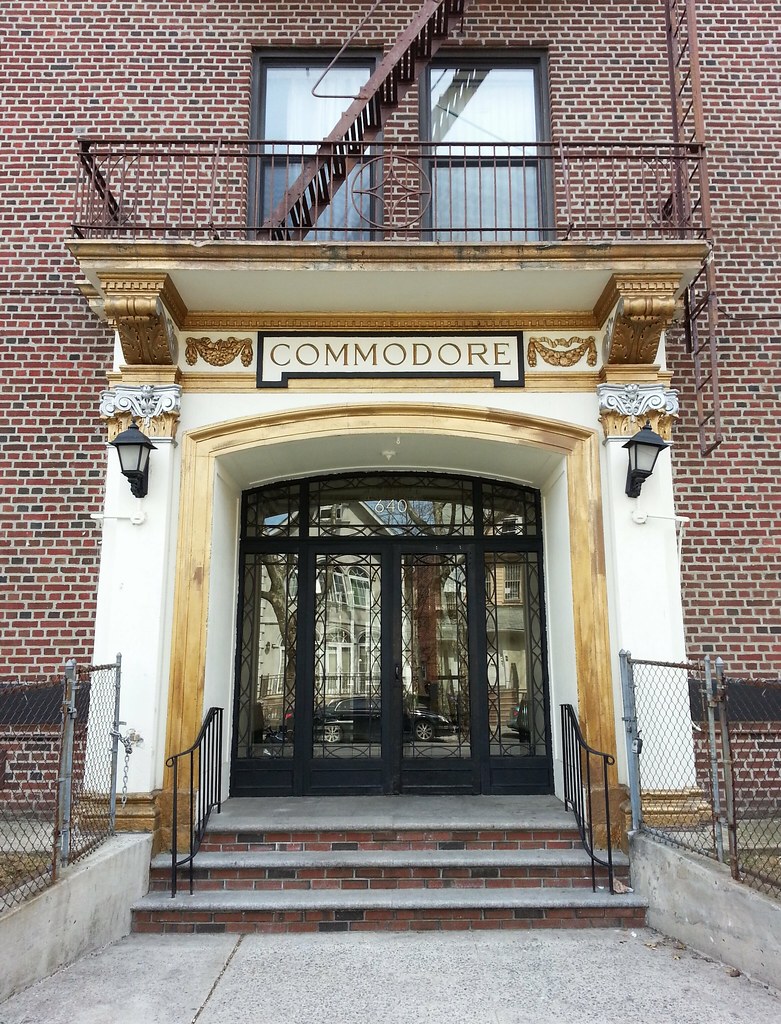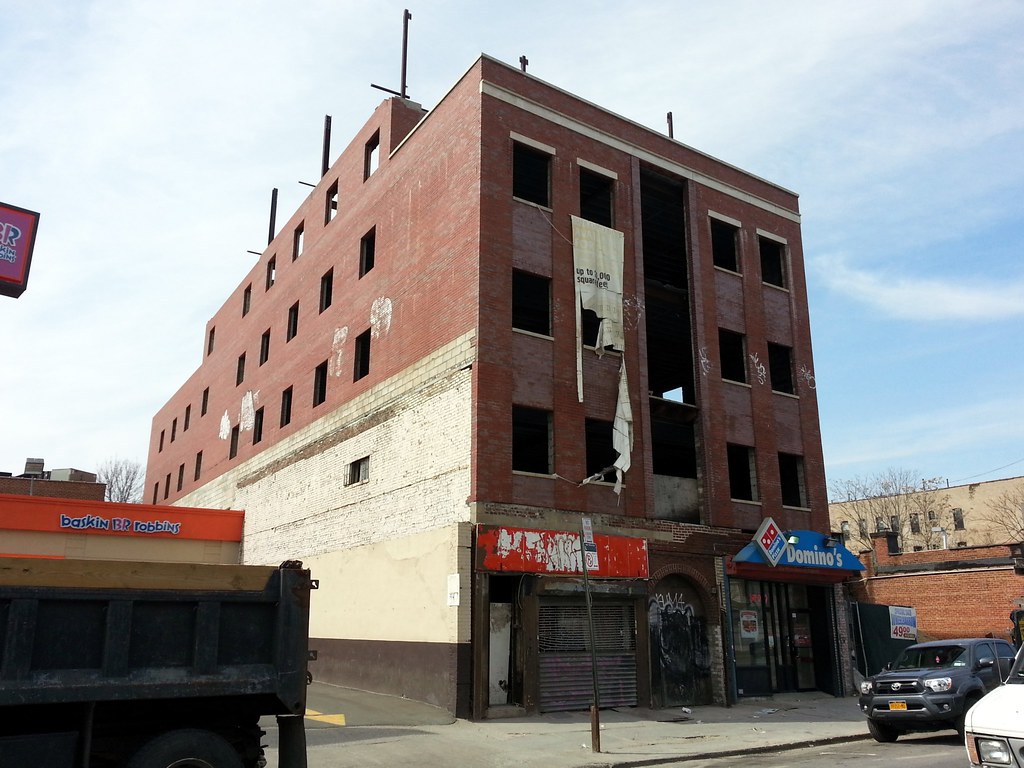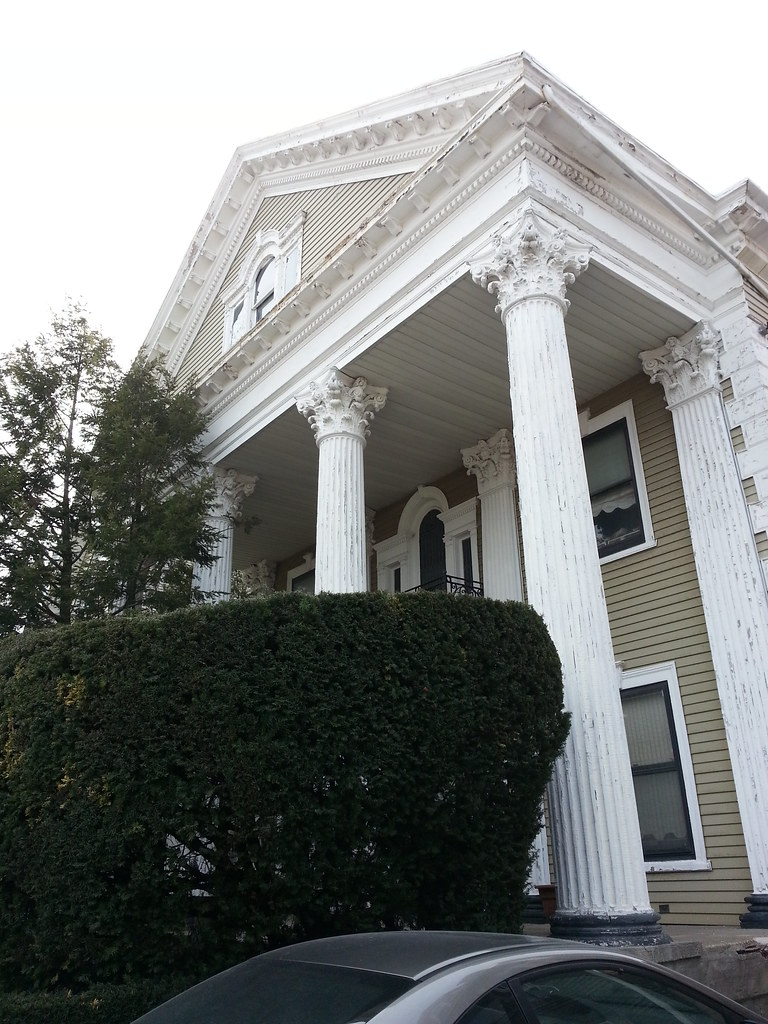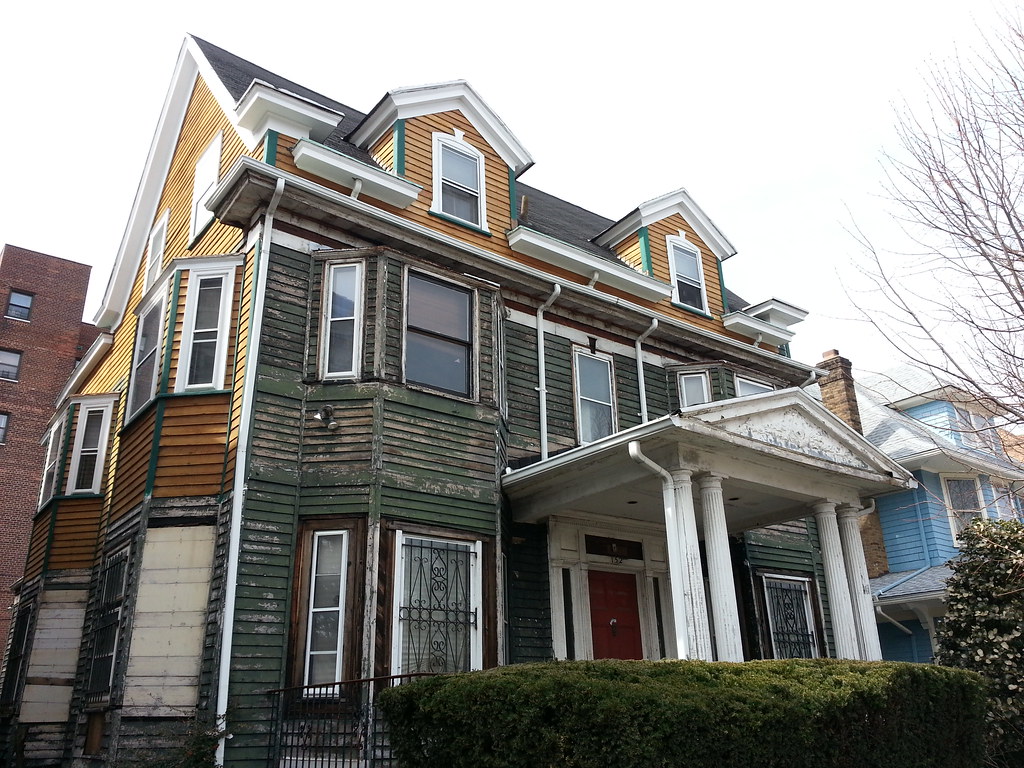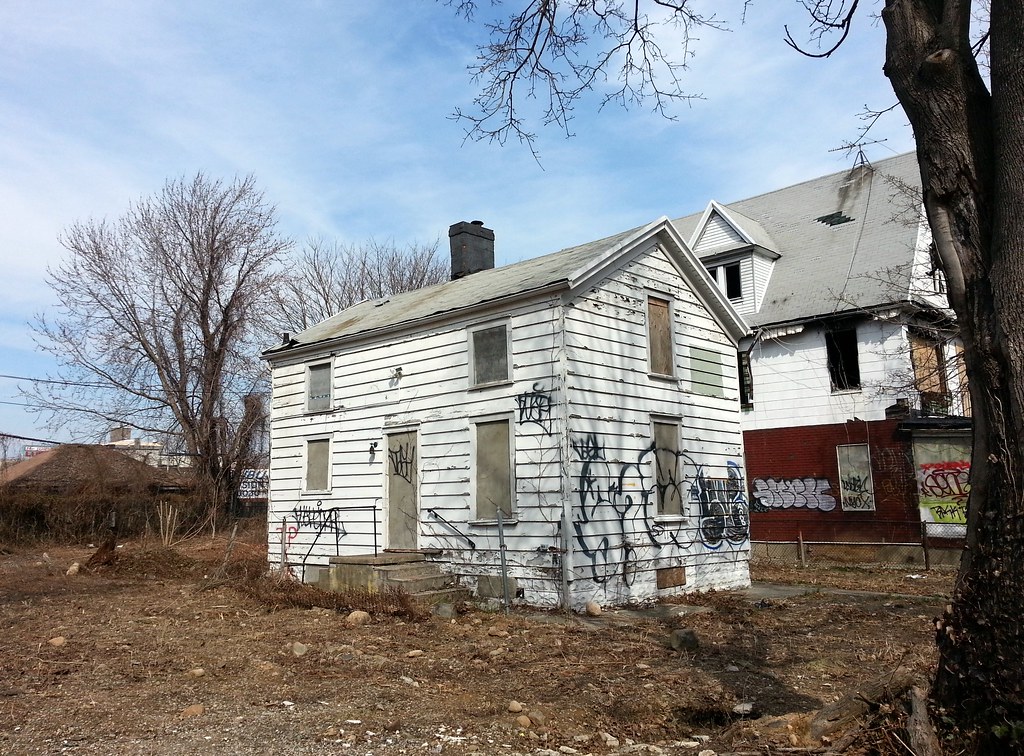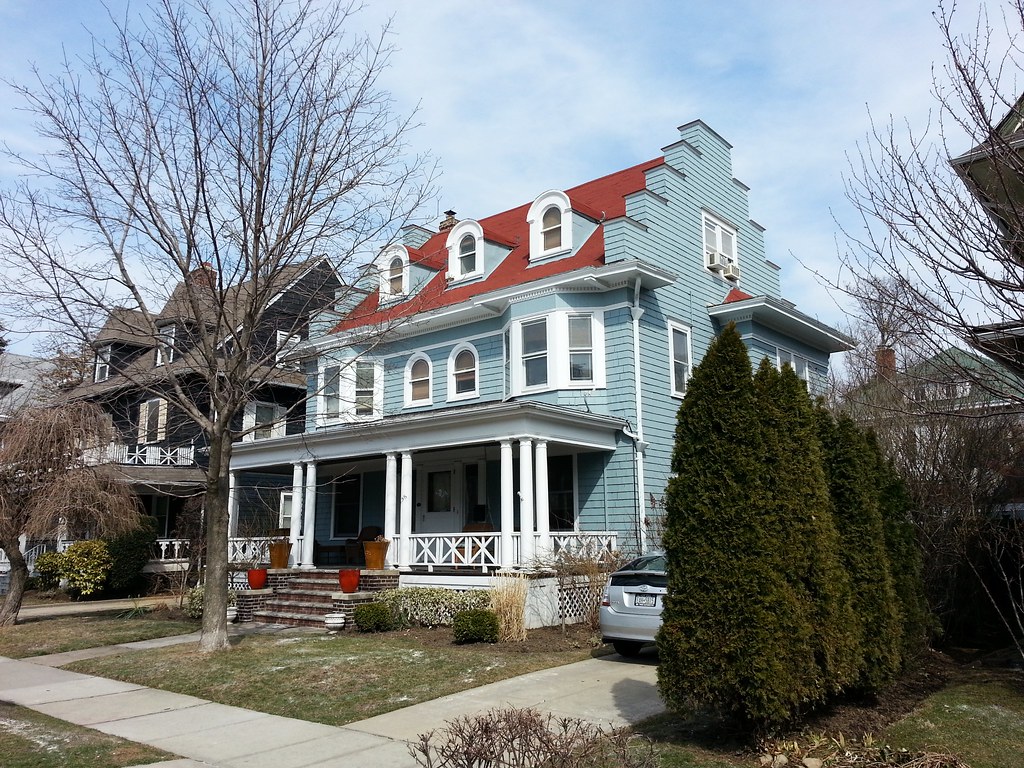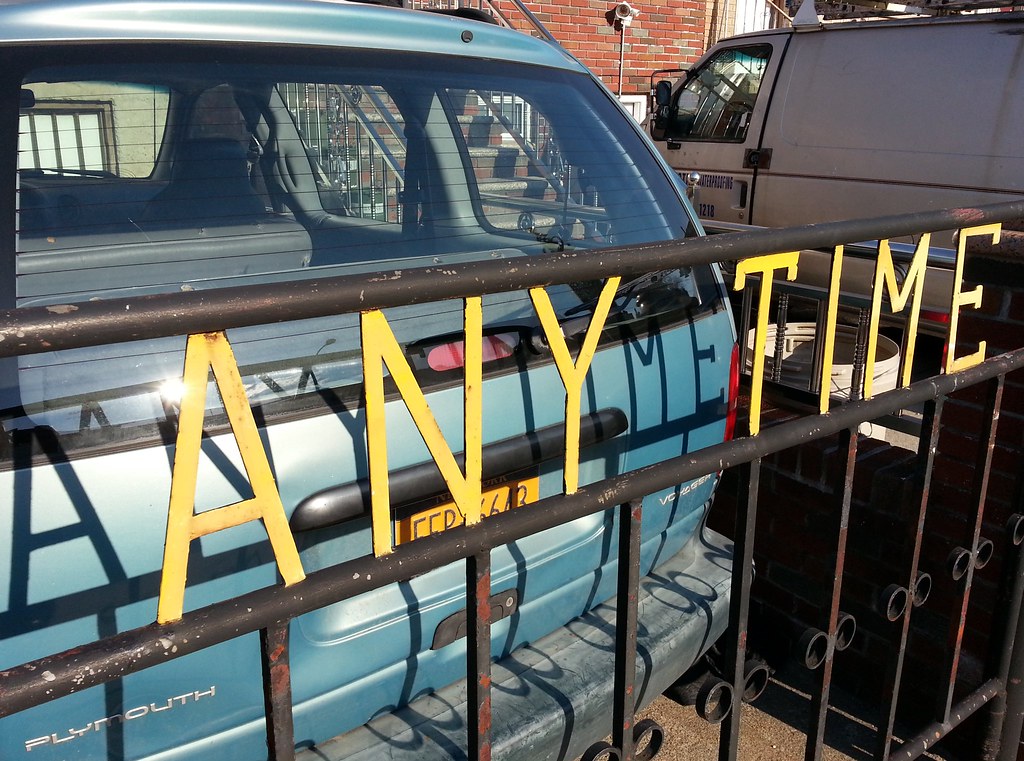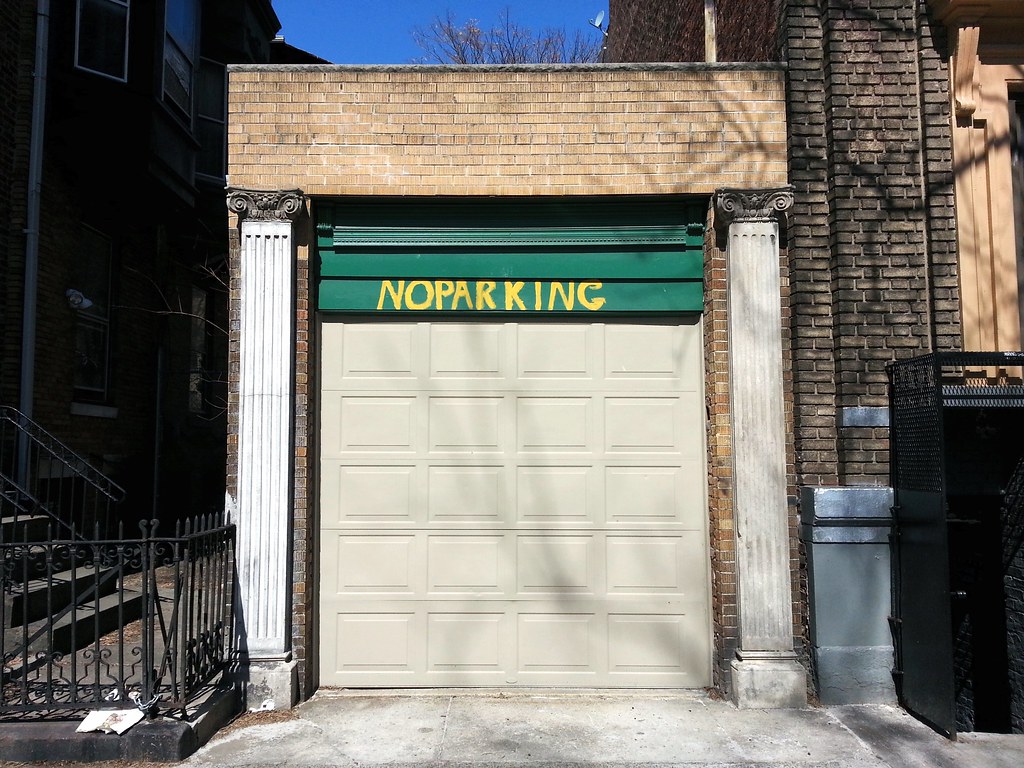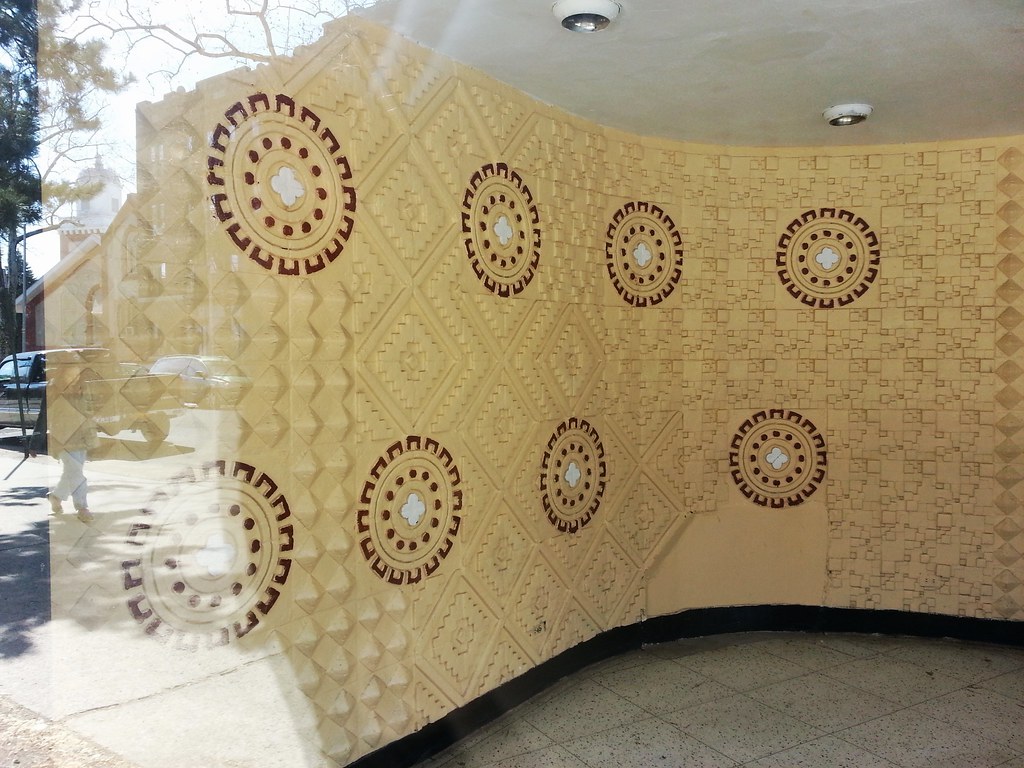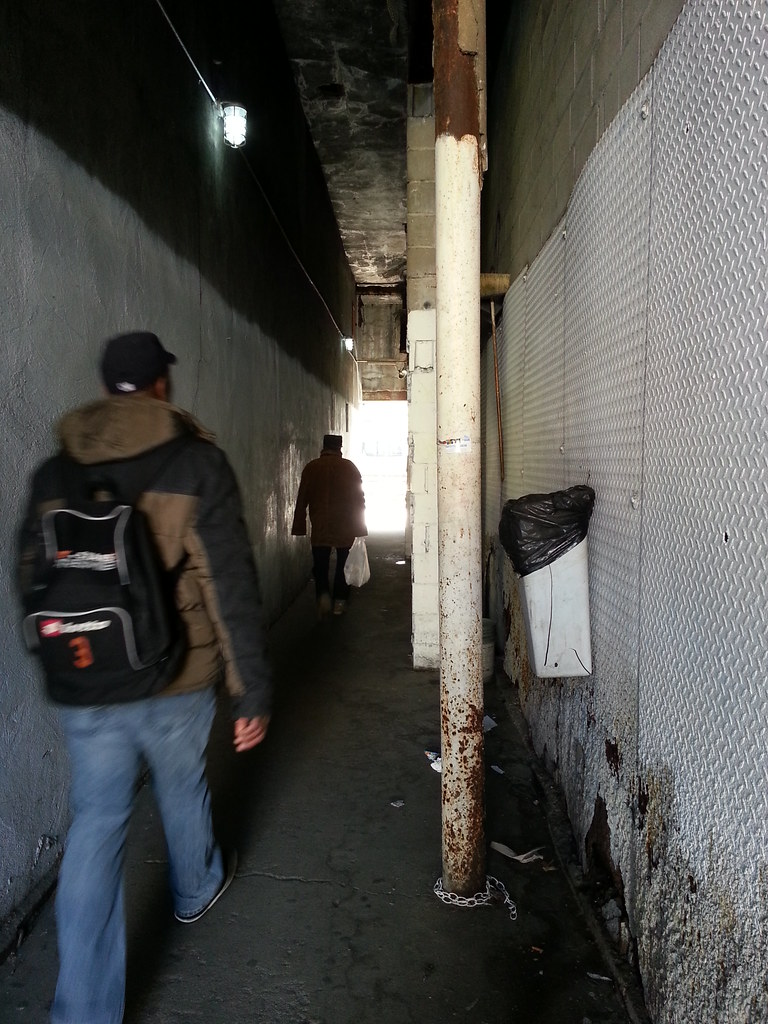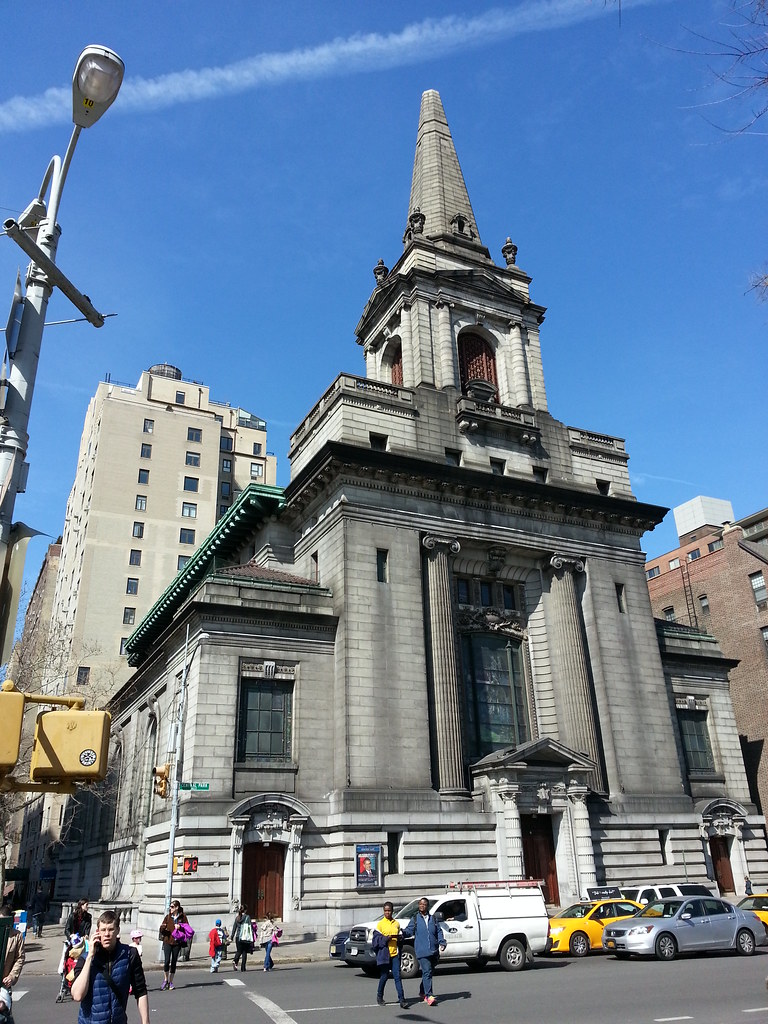
Now home to the East Coast branch of Crenshaw Christian Center, the L.A. megachurch known for its massive FaithDome, this imposing 2,200-seat edifice (interior photo) was completed in 1903 for the First Church of Christ, Scientist, which occupied the place for the next 100 years. Augusta Stetson, one of the women who brought Christian Science to New York, was the head of the church at the time of construction, having previously driven off a fellow church pioneer who then went on to found a rival congregation. "Endowed with boundless energy and executive capacity, audacious, abrasive, unbending and ruthless, yet adored by hundreds of students and church members", Ms. Stetson was a strong and forceful leader whose personal ambition strained relations with the Mother Church in Boston and eventually got her excommunicated in 1909. (Note the adjacent story in the newspaper I just linked to: "TARANTULA IN MAIL. Throws Dead Letter Office Clerks Into Frenzy.")
Promoting herself as the true spiritual heir of Mary Baker Eddy, the founder of Christian Science, Ms. Stetson maintained a considerable following after her excommunication and even began taking out full-page (and sometimes multiple-page) ads in prominent newspapers to feud with the church establishment and present her teachings directly to the masses (as well as to publicly wage a successful battle against the "spite wall" that the church wanted to erect between its own building and the mansion she lived in next door). She proclaimed that Ms. Eddy would be returning from the dead shortly, and also "announced, with all solemnity and seriousness, that she [herself] would never die. She made it clear she meant this in no metaphorical sense and that she did not have reference to the immortality of the soul. She simply would not die."
(She did though.)

"The Ungainly Duckling That Alighted Along the Park" is apparently home to one or more valuable rugs.
Probably the most famous residents of the Braender were Winifred Sackville Stoner and her daughter of the same name, who lived here in the 1920s. Winifred Jr., born in 1902, had been celebrated as a child prodigy, "the roly-poly girl who talks eight languages and teaches school and writes poetry and does a score and one things additional that stamp her as the most unusual of 12-year old girls". Winifred the Elder insisted that her daughter was not particularly gifted, however, and that it was the system of "natural education" that she had devised for her daughter that had allowed her to flourish.
A key part of this educational system was the creation of little poems or jingles to help keep facts straight. Young Winifred was a rather prolific author of such verse. (Here's one of the collections she published.) Her most well-known poem, "The History of the U.S.", begins with a couplet you may have heard before: "In fourteen hundred ninety-two / Columbus sailed the ocean blue". Don't give her credit for that rhyme, however. It was around well before she was, as this joke makes clear.
Mother Stoner (or "Mother to All Children", as she was sometimes billed when speaking about her educational methods) much preferred these practical, factual rhymes to the "immoral, un-American, brutal, ungrammatical, silly, and salacious" tales of Mother Goose, which
[teach] children to lie and steal—in some cases to take life. . . .Mrs. Stoner's eyes were opened to the grievous flaws of Mother Goose when her three-year-old daughter called her out as a liar for suggesting that a cow could jump over the moon, that a dog could laugh, and that a dish could run away with a spoon. She relates that story in this absurd 1925 article, in which she also offers her criticisms of several popular nursery rhymes, including:
No one should misinterpret life to children. It is not only criminal to do this, but it makes criminals of children. Mother Goose nourishes fear and inferiority complexes. And Mother Goose is so English in its terms that the child forgets he is an American, unruled by king or sixpence.
Goosie, goosie, gander,In 1927, mother and daughter took off across the US and Europe, respectively, on a hunt for young geniuses. According to an article about their search, "All the children thus discovered will be brought back to New York", where Mrs. Stoner would foster their brilliance under her educational guidance. The article goes on:
Where shall I wander?
Upstairs, downstairs,
In my lady's chamber,
There sat an old man who wouldn't say his prayers.
I took him by the left leg and pulled him down the stairs.
"The rank immorality of this poem is evident at once," she comments. "What was that old man doing in the lady's chamber? His presence there was improper and a violation of all decent conventions. I would substitute for this atrocious piece of loose morals something like this:
Dirty face, dirty face, you are a fright;
Dirty face, dirty face, get out of my sight!
Pretty face, pretty face, clean as can be;
Pretty face, pretty face, stay always with me!
"This takes the attention from the goose, the most stupid animal in all nature, and focuses it on one of the first Christian virtues, cleanliness. We mothers cannot begin soon enough to teach the beauty of cleanliness to children."
The world is divided into six classes, in which the hyper-morons—otherwise the rank and file of human beings—predominate, according to Mrs. Stoner. These classes are:This might be hard to believe, given her perfectly normal-sounding childhood, but Winifred Jr. had a rough go of it as an adult. In 1921, at the age of 18, she married an urbane French count named Phillippe Clinton de Bruche who turned out to be a duplicitous German con artist known to the police as Robert Hemholtz. (His pseudonyms, especially the French one, vary somewhat from one article to another.) After she began divorce proceedings, the phony count reportedly died in an automobile accident in Mexico in 1922 (her family held the funeral service here at the Braender), only to reappear in New York in 1929 upon reading that Winifred had become engaged to former Secretary of State Bainbridge Colby.
(1), Idiots; (2), deconstructionists; (3), morons; (4), hyper-morons; (5), constructionists; and (6), geniuses.
Destructionists include anarchists, bomb throwers, etc., while constructionists are those striving to improve their business and include bank presidents, highwaymen and newspapermen.
"But the world is full of morons," she asserts. "The girl who wears furs in summer because it's the style is a moron. So is the man who wears a collar in hot weather. So is the minister who preaches the same old stuff from the pulpit. Morons, in brief, are those who blindly follow in the rut."
In the intervening years, before she found out de Bruche/Hemholtz wasn't actually dead, Winifred Jr. had married again, making her an unintentional bigamist. The relationship didn't last long, however, and the papers ate it up when the couple split, especially when it came out that Winifred's husband thought she made a lousy cup of coffee. Headlines included "Speaks Seven Languages, But Cannot Make Coffee—So She Loses Husband" and "Wonder Child's Intellect Bad For Marriages".
In a 1930 newspaper article, Winifred Sr. admitted she made some mistakes in raising her daughter. (Of course, this admission was coupled with an announcement that she was working on a book about "why her perfect child hasn't found happiness.") Her biggest regret? "Not staying at home and being an old-fashioned matchmaker for Winifred."
Winifred Jr. got married for a third time in 1931, but she and her new husband called it quits a few days later, at which point her mother proclaimed: "Winifred is now cured of matrimony. She will stick to her books instead of showing interest in men whose pedigree she does not know."
The last article I could find about Winifred Jr. told of her filing a charge in 1937 with the district attorney against a man she claimed stole $7,000 worth of her jewelry, but then abruptly fleeing the DA's office when she saw two detectives arrive with warrants for her arrest on charges of bail-jumping and petty larceny (stemming, I believe, from an unpaid hotel bill).
I also found a website with some bare-bones info on Winifred Jr. collected from various publications over the years. According to that site, she got hitched two more times in her later years. It sounds like the first marriage lasted about 18 years, from 1943 until her husband's death, and the second lasted another 18 and change, from 1964 until her own death in 1983. (Man, this is my most gossipy post ever.)
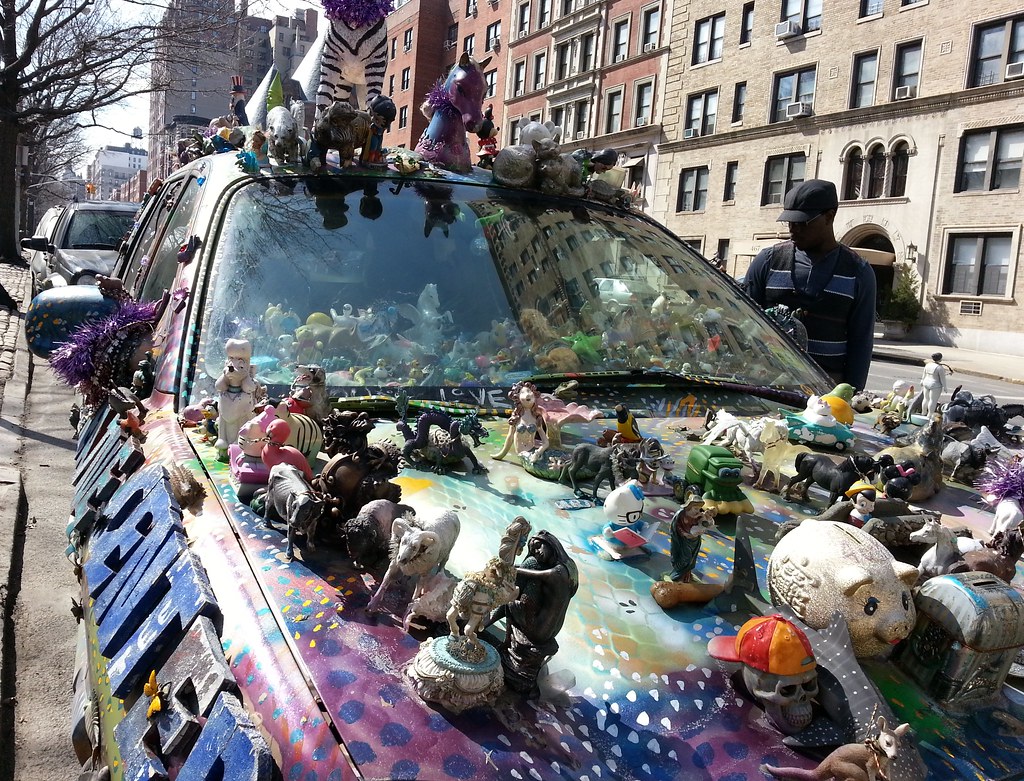
One of four art cars by Lalainya of the Vortex Creative Art and Design Center. You can see a few more shots I took here.
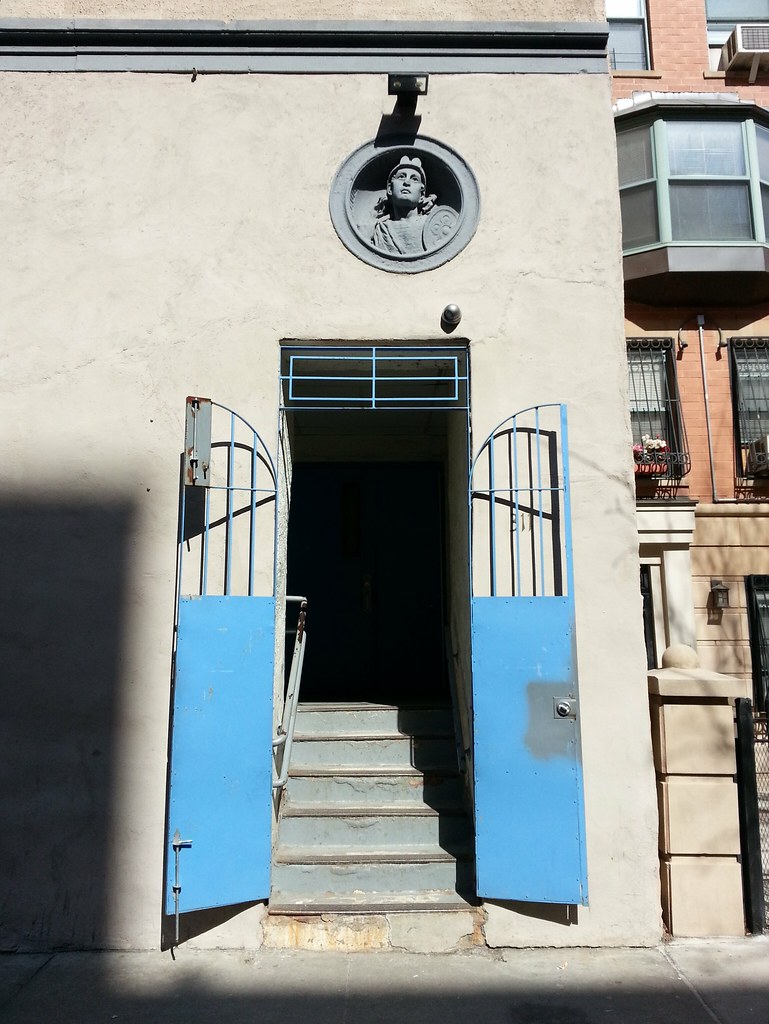
Currently home to the New York French American Charter School, this building began its life around 1904 as a Schinasi Brothers cigarette factory run by Solomon and Morris Schinasi, who had immigrated to the US in the 1890s and found great success introducing Turkish tobacco to American smokers. The building's appearance has changed dramatically over the years, as you can see. There are still some visible vestiges from the days of tobacco, however, including two seemingly inscrutable circular reliefs on the facade. The one pictured, it turns out, is a three-dimensional version of a soldier found on the label of Schinasi Bros. Natural cigarettes, while the other (photo) features an emblem of the company's Egyptian Prettiest smokes.
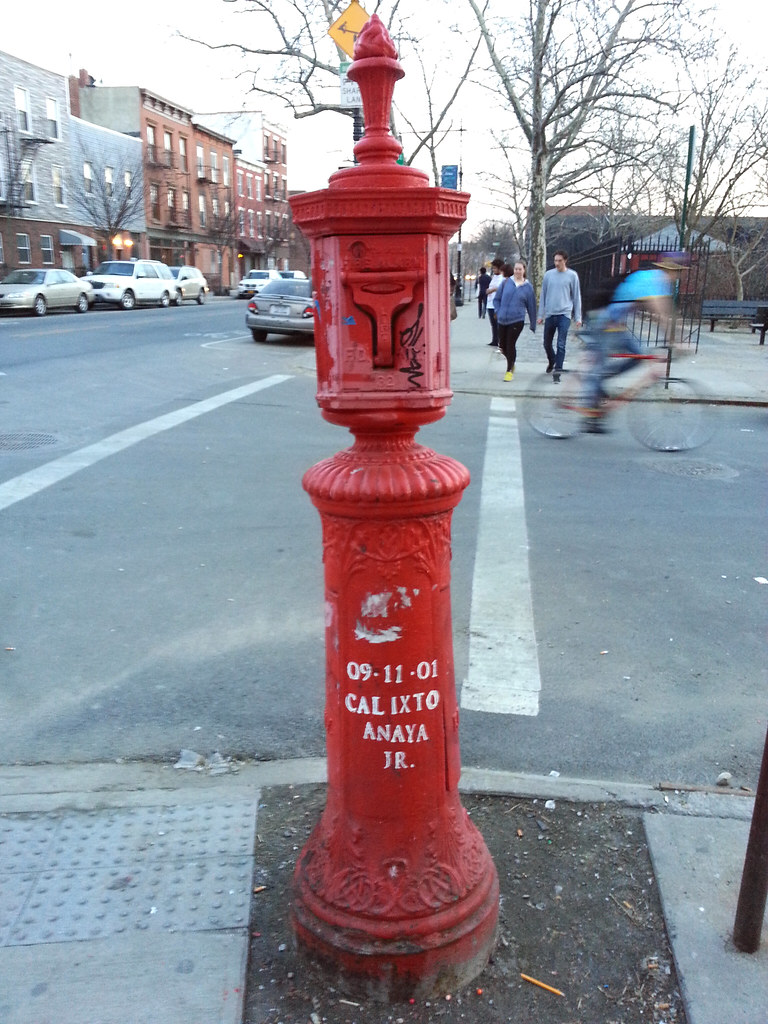
A deceased firefighter memorialized on an FDNY call box. (Spotted on an unofficial evening stroll through Greenpoint.)

The seat of the archbishop of New York is clad in scaffolding as it undergoes a multi-year renovation. (Photo taken from the International Building at Rockefeller Center.)

In New York City, "meter-maid vehicles" like this Westward GO-4 Interceptor are generally associated with the NYPD, which owns a large fleet of them, but you also occasionally spot one on the street belonging to an individual or a business. Borough Park seems to be home to a particularly high number of these privately owned three-wheeled buggies; one Hasidic guy here told me that Jews in his community often buy them from the city at government auctions.

According to a supervisor on site, Con Edison needs to repair a failure in an underground electric transmission cable running beneath Dahill Avenue. But because the insulating oil that fills the cable is pressurized, the oil has to be frozen at two points, one on each side of the failure, so that the cable can be sliced open and fixed without all the oil rushing toward the cut. At the "freeze pit" pictured above, as well as at another similar structure located down the road on the other side of the failure, liquid nitrogen (I believe) is being used to freeze the oil in the cable.

Here are two more privately owned three-wheeled buggies: a red Cushman Truckster and, in the background, another Westward GO-4 Interceptor.

A Hasid's hat can be an important expression of his identity. While all such headwear may appear similar to a casual observer, "there are big differences in the hats when you know where to look". According to one Jewish hat wearer:
The male identity is so profound in the community. A visit to [the hat store] is really the one time that they act with vanity. They keep looking at the hat . . . The differences are crucial once they put [it] on . . . Is this brim too big? Does this make me too fat? There is nothing more important than the hat. Nothing. Not even nuclear war.

in Victorian Flatbush, "in many respects . . . the first suburbs"

These are the first NYC crocuses I've seen in bloom this year, although I'd imagine plenty of others opened up during the warm weather of the past week while I was out of town. On account of the harsh winter, we're about two weeks behind 2013 and close to a month behind 2012.
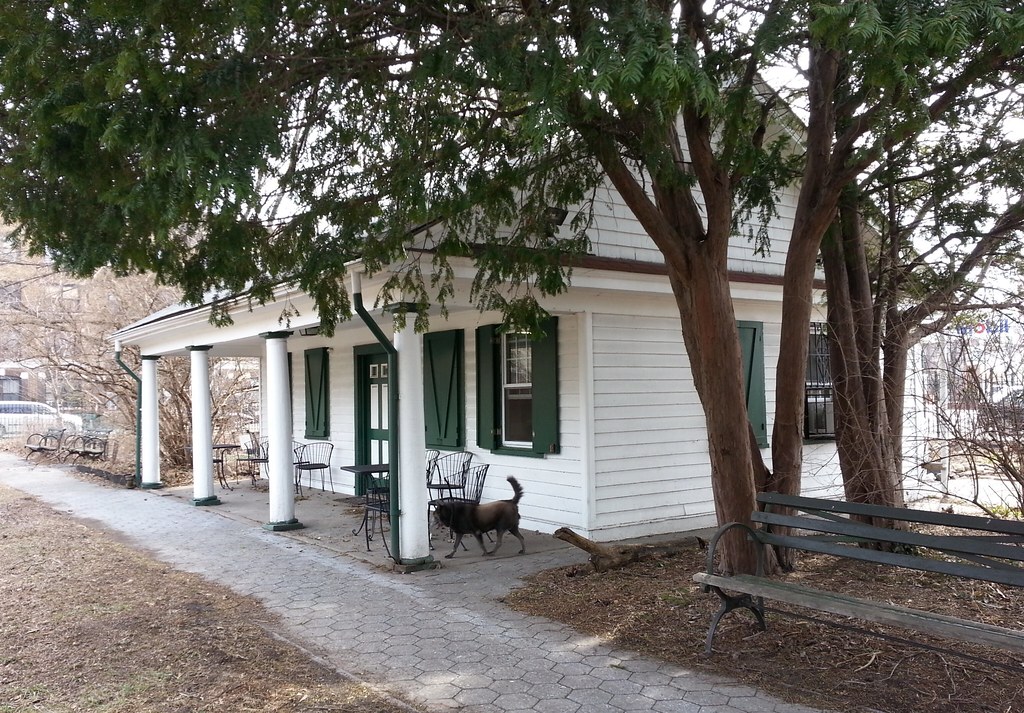
around Bowling Green Cottage, an 1885 addition to Prospect Park's Parade Ground
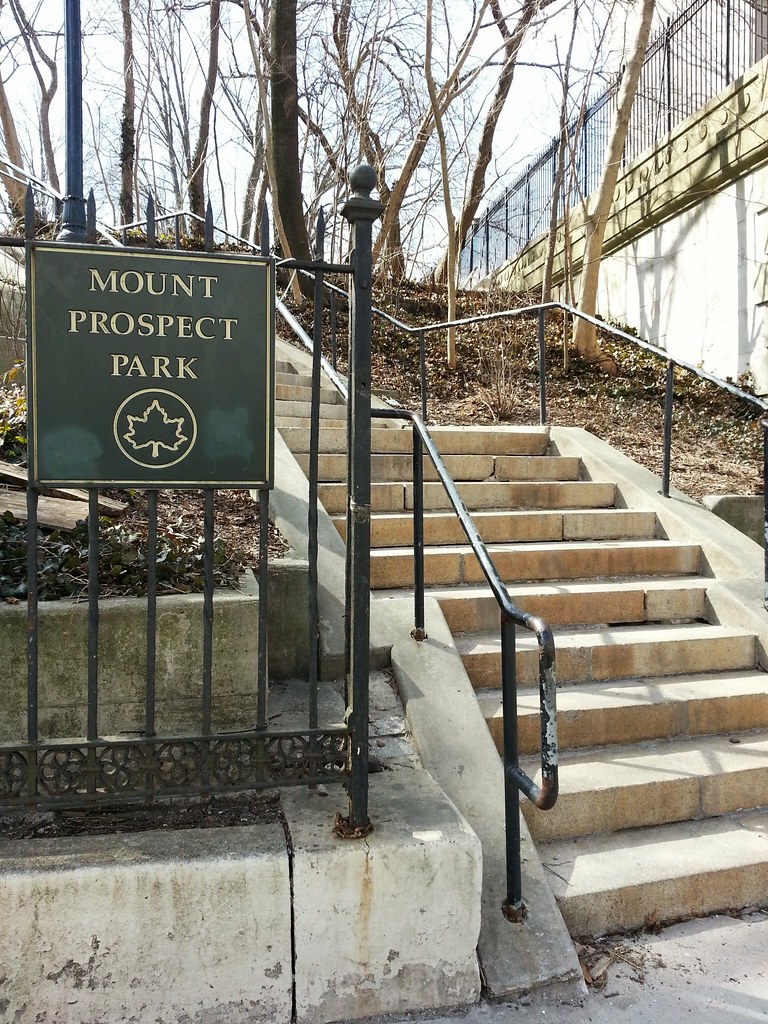
Home to the second-highest peak in Brooklyn, this park occupies the former site of the Mount Prospect (or Prospect Hill) reservoir. Here's an early 20th-century postcard view of the reservoir and its water tower.
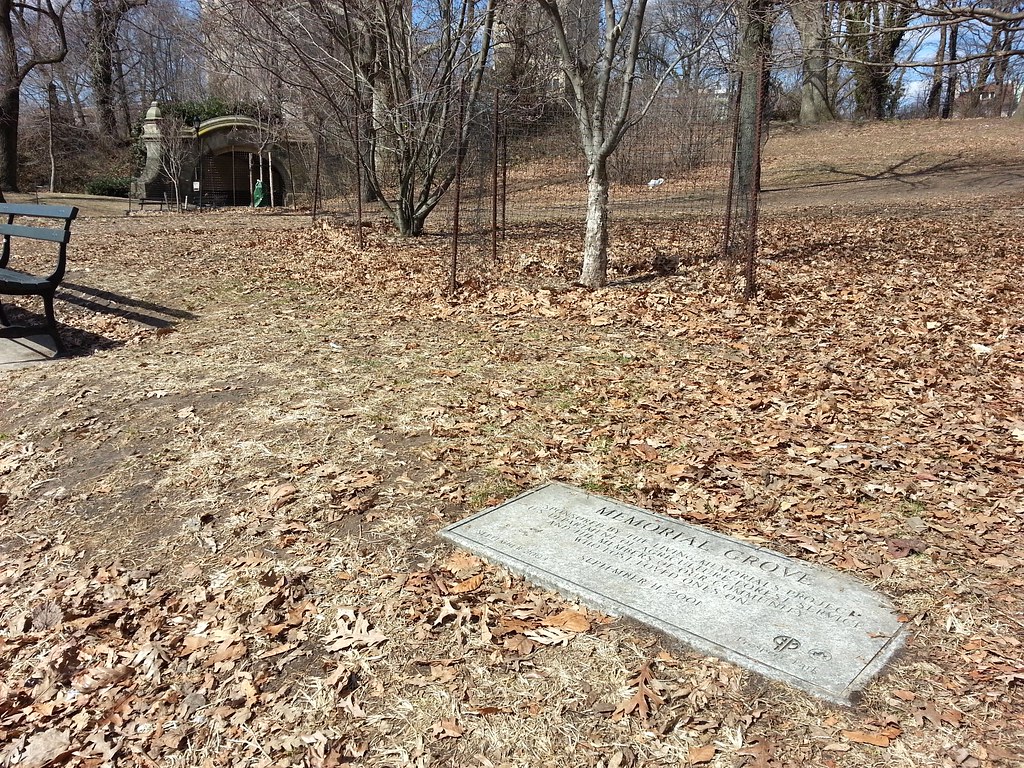
I assumed that this memorial grove in Prospect Park would consist of trees planted around the time of the grove's dedication in 2003, so the scarcity of young trees in the area (you're looking at just about all of them) made me wonder if some others had died and been removed over the past decade. This page leads me to believe that the grove's creation mostly involved the restoration of an existing treed area of the park, however, which makes more sense given the surroundings. You can take a look around the grove here.
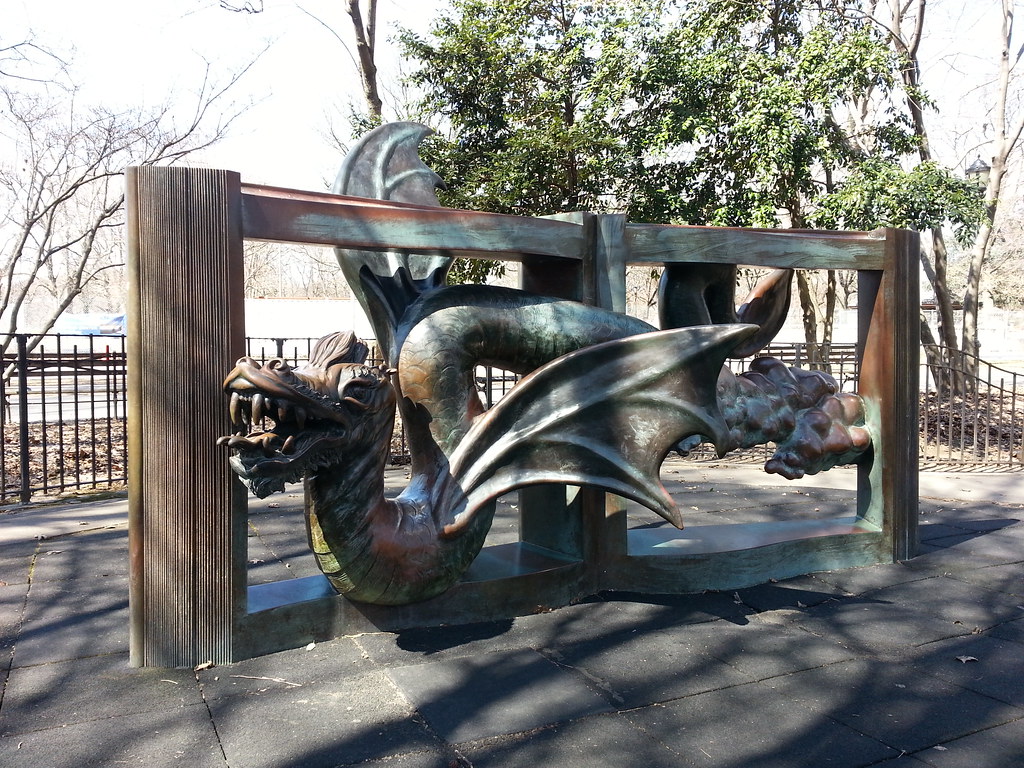
In the warmer months, sheets of water flow from this sculpture at Prospect Park's Imagination Playground.
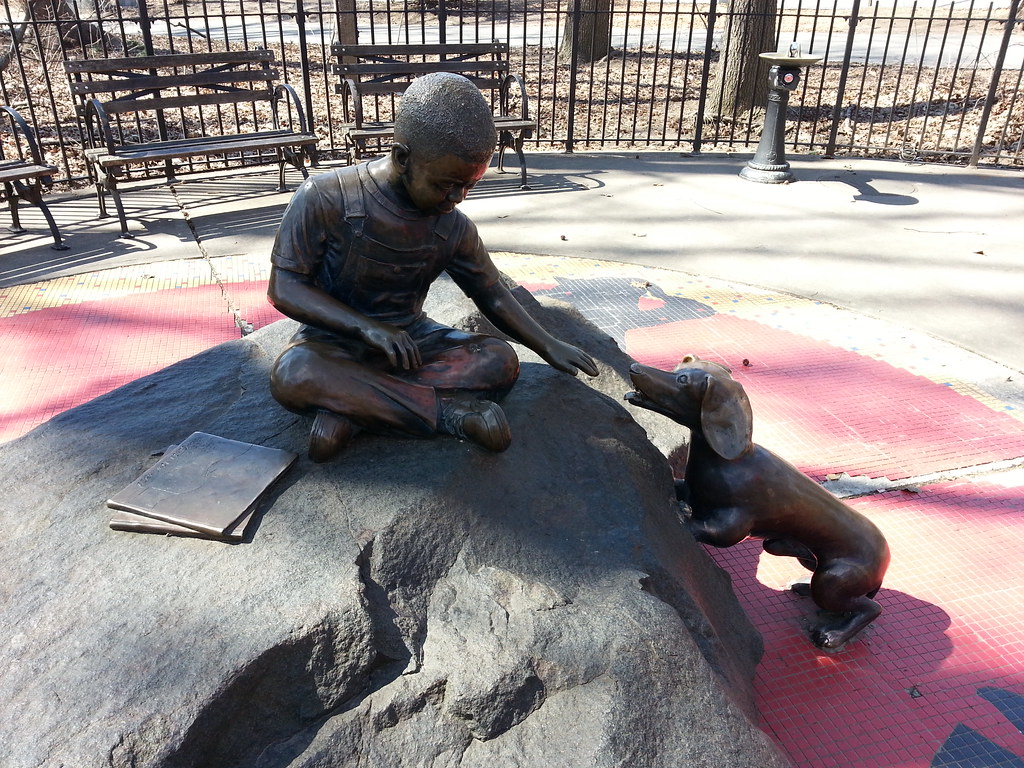
This sculpture at Prospect Park's Imagination Playground was inspired by Ezra Jack Keats's book Peter's Chair. From the NY Times:
When the playground opened in 1997, the sculpture of Peter was a deep blue. "The ears soon lost their patina," Mr. Zimmerman said, "because kids would sit on the rock and whisper to Peter."
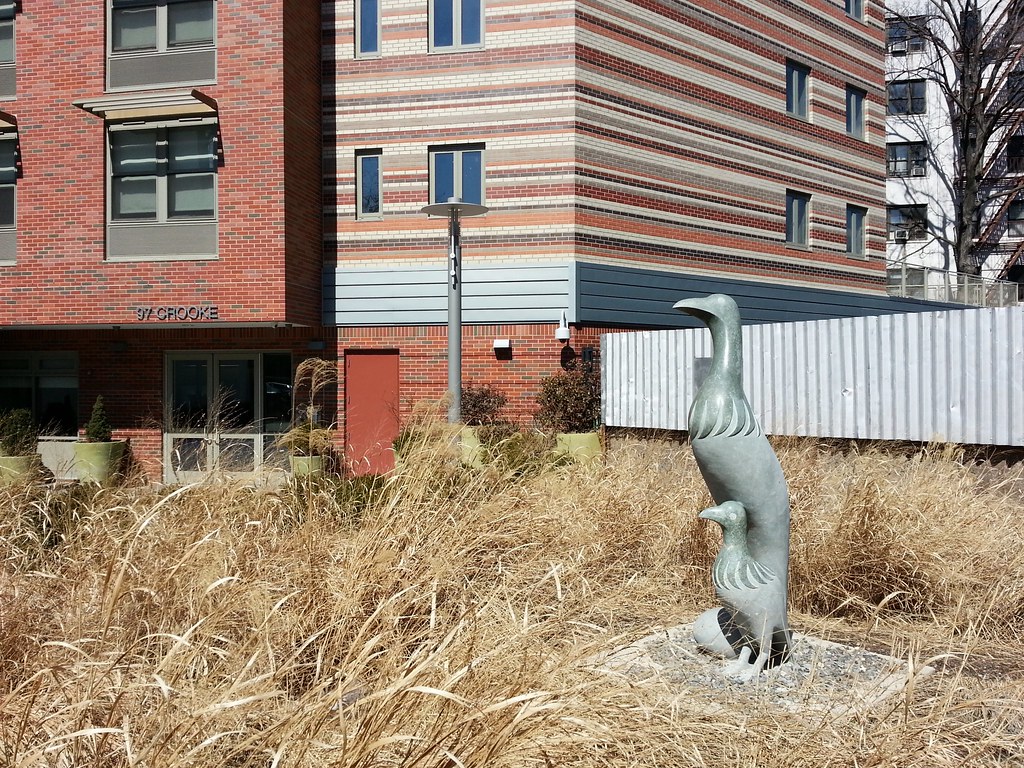
This 53-unit building for low-income and formerly homeless individuals was erected on a long-vacant, oddly shaped lot abutting the tracks of the Q train (aerial view). The interior décor includes Shona stone sculptures, so it seems like a decent bet that the carved birdies pictured here also hail from Zimbabwe.
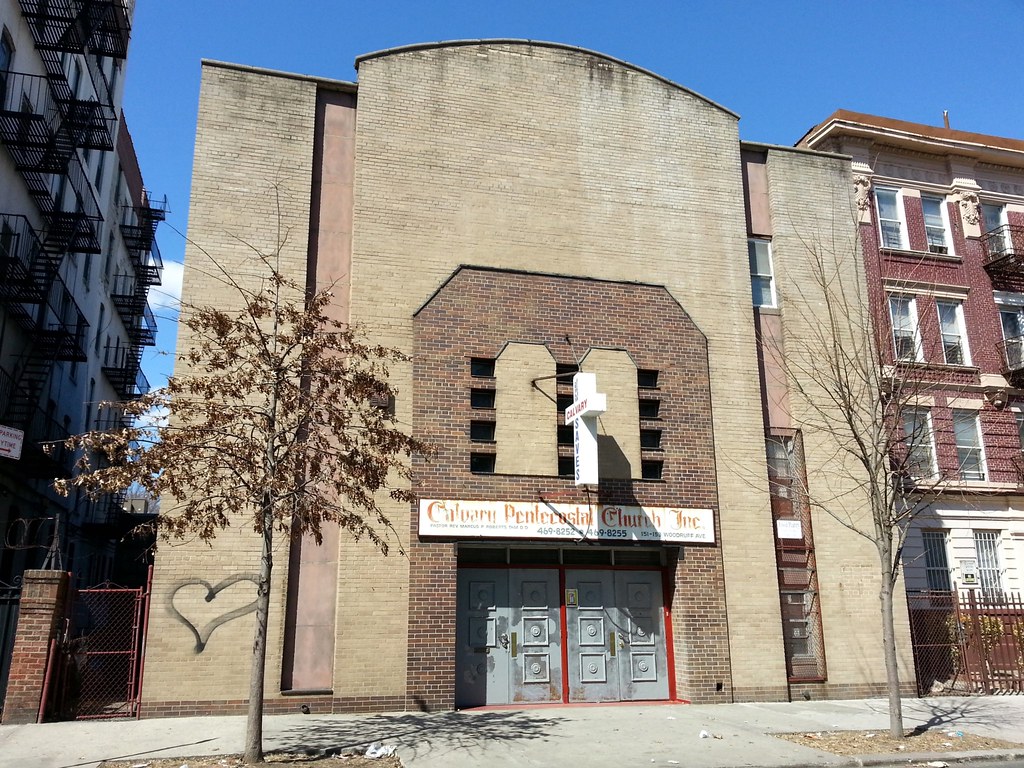
This churchagogue was once home to the Woodruff Avenue Temple. A subtle vestige of the building's past can still be found above the doorway, where the "JESUS SAVES" cross is attached to two shapes that resemble the tablets of the Ten Commandments, but the Jewish origin of the structure was much more apparent just a few years ago, as you can see.

A closer look reveals a number of other birds, as well as some rat- or weasel-like creatures, interwoven into the ornate patterns surrounding the doorway.
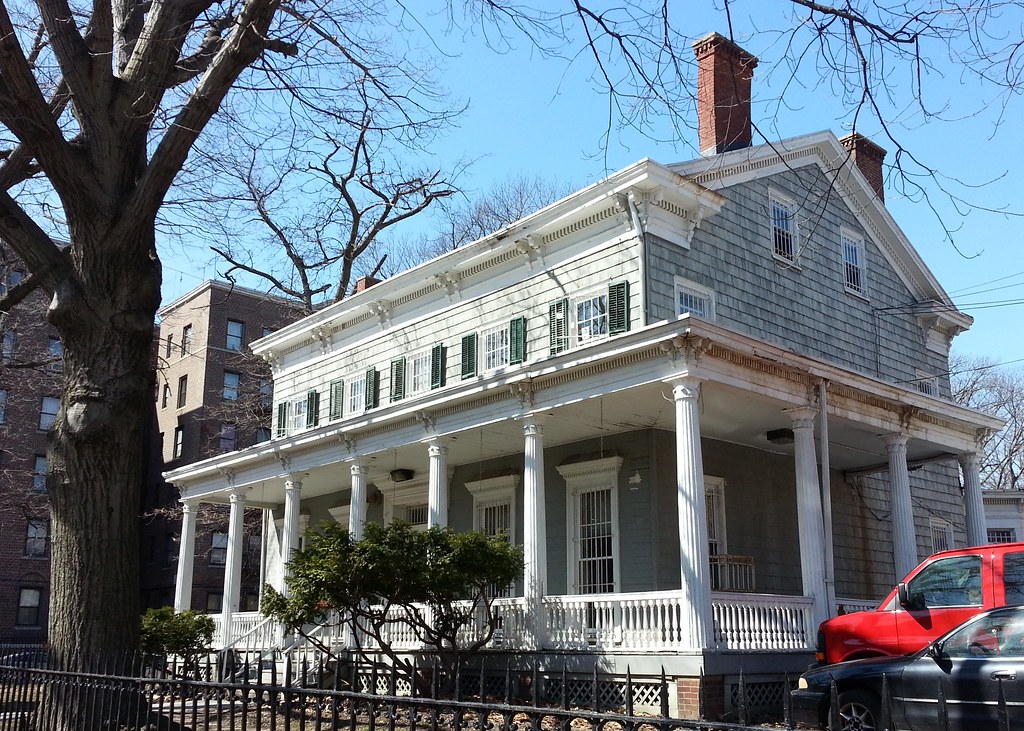
of the Flatbush Dutch Reformed Church, relocated across the property to this site in 1918
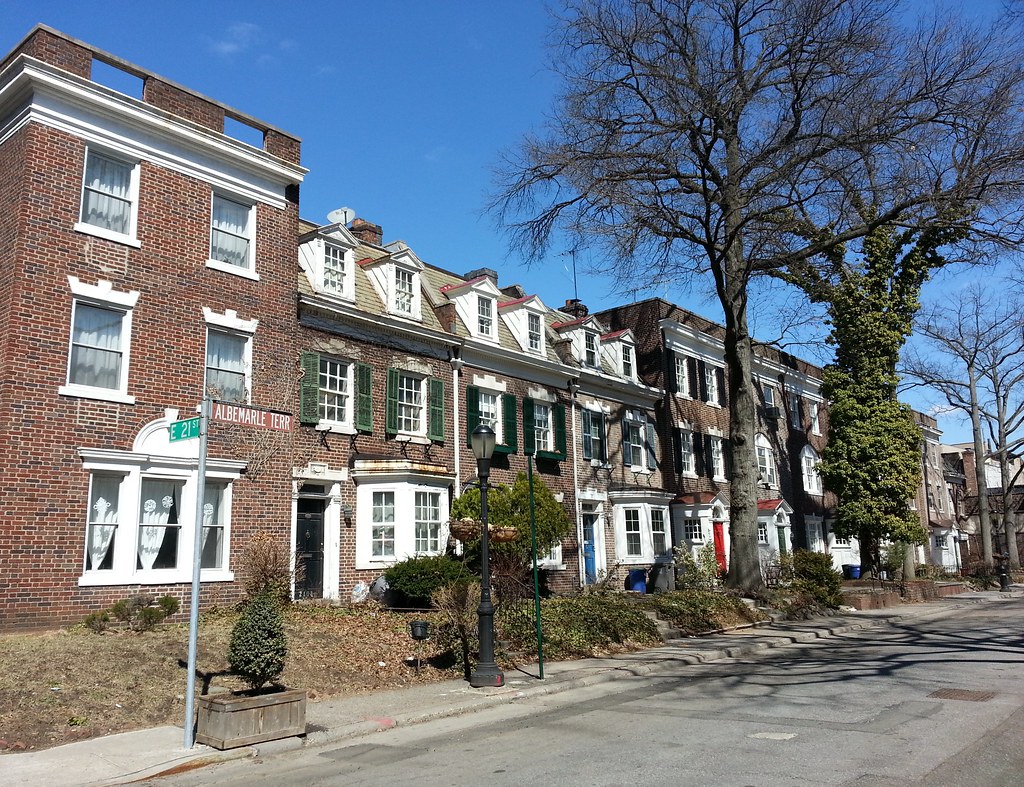
This quaint cul-de-sac (Street View), developed in 1916-17, possesses "a tranquil ambience that offers a refreshing contrast to the crowds, traffic and noise at the nearby intersection of Church and Flatbush Avenues" (Street View).
Located directly to the north of Albemarle Terrace is its sister development, Kenmore Terrace* (Street View). While the houses of Kenmore Terrace were built just a couple of years later, most of them differ in a key way from their Albemarle Terrace counterparts, "reflect[ing] a change in the way of life of the American family":
Realizing that the automobile had become a necessity for the middle class, the architects incorporated garages into the picturesque design of the houses. These two-and-a-half-story houses were among the first to have garages placed in the ground floor and to have the doors fully exposed on the main facade.* Only the south side and eastern end of Kenmore Terrace were built up, however. The north side is owned by the Flatbush Dutch Reformed Church and is the site of the 1853 parsonage we just saw.
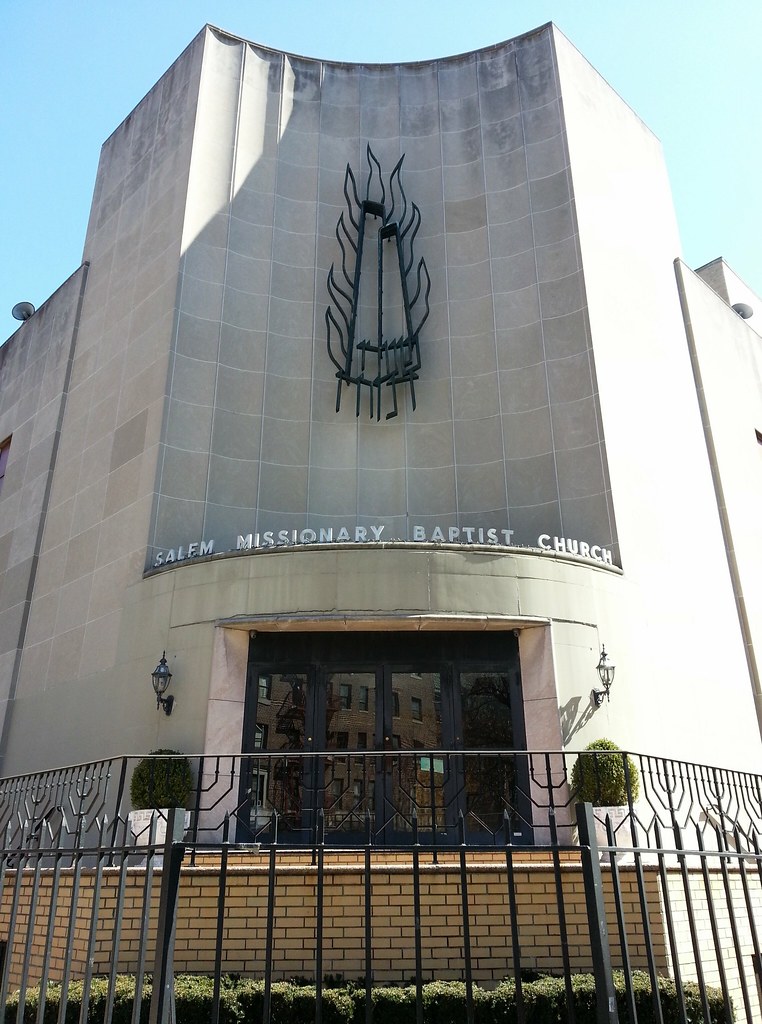
This was the childhood house of worship of Ellen Levitt, Queen of the Churchagogues. Her discovery that it had become a church, while still retaining visible traces of its Jewish past, sparked her interest in the subject:
I have located, photographed, researched, and documented the stories of nearly 280 lost synagogues – buildings that once were shuls, are shuls no longer, yet remain standing. There are many other synagogues that are completely gone, but I have chosen to focus on those whose shells remain.
Why did I pursue this? In April 1999, I decided to see what had become of the synagogue I had attended as a little girl. Once known as Shaare Torah, in Brooklyn’s Flatbush section, it had morphed into the Salem Missionary Baptist Church. I snapped photos of the site, on East 21st Street and Albemarle Road, because it still had Jewish [menorahs] on the front railing. The shul’s name [in Hebrew] was still there, alongside an artistic rendering of the burning bush created by the renowned sculptor Ludwig Wolpert.
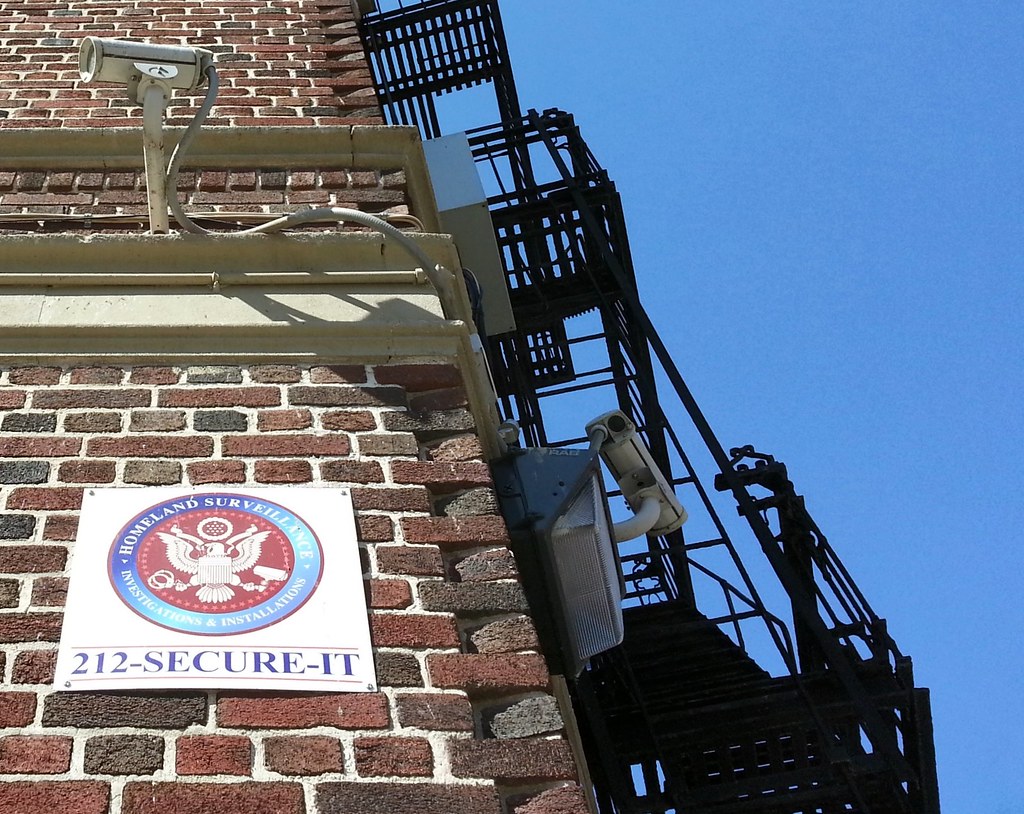
An updated take (closer look) on the Great Seal of the United States
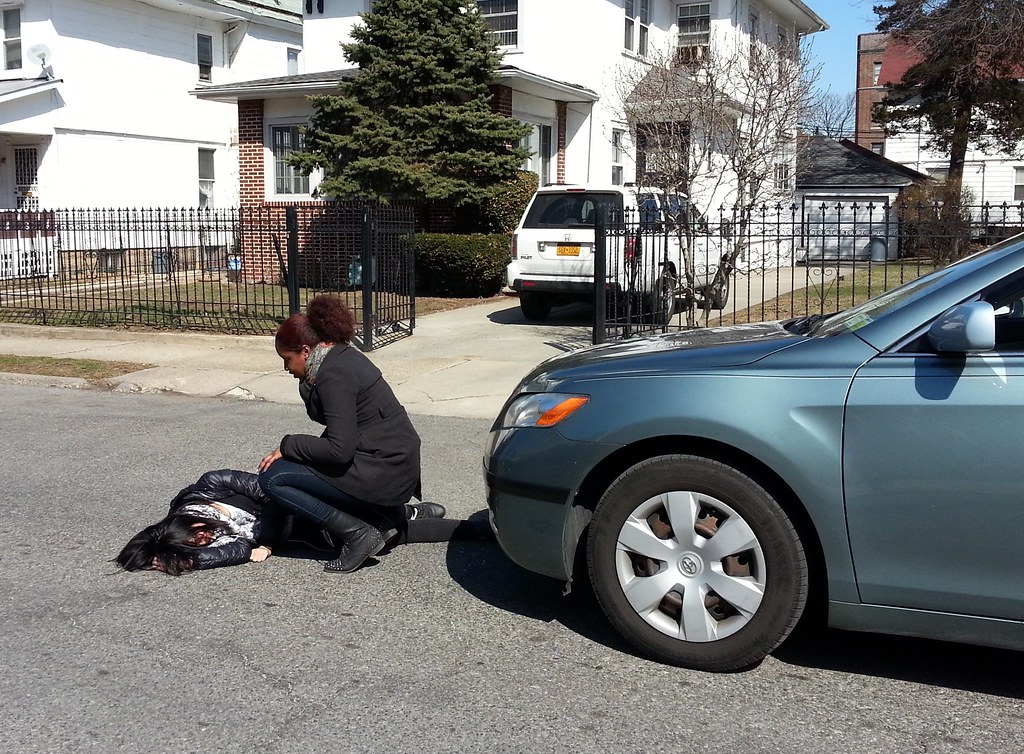
Wow. This is the first time I've seen someone get hit by a car.
Well, "hit" is a strong word. The car was moving about 2 miles per hour and the girl collapsed before it even touched her. The "collision" was staged for a student film, one that was being shot with a small point-and-shoot camera. One girl involved in the filming forgot to put her cell phone on silent and it rang while the camera was rolling.
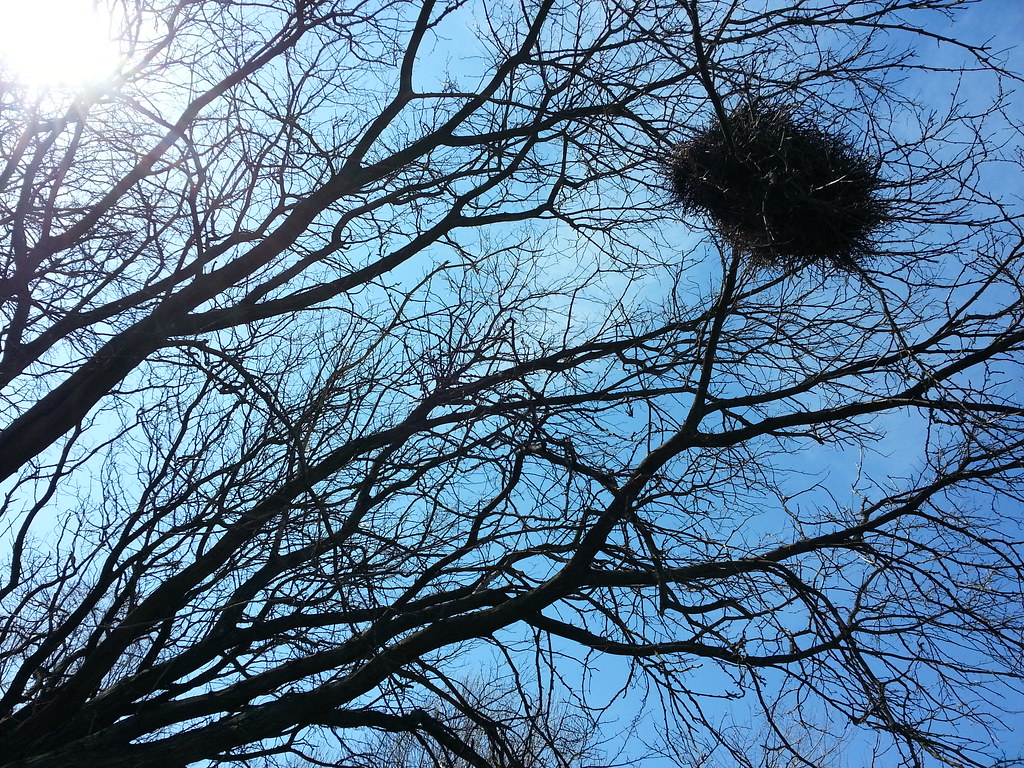
I spotted a couple of nests here on Glenwood Road, just a block from the wild parrot stronghold of Brooklyn College.




